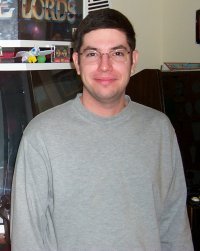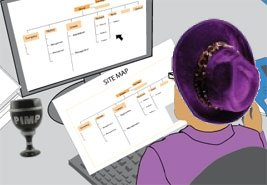About: Michael Adcock

Old me: Software Developer
I had worked professionally as a software engineer for about eight years before returning to school to earn an MLIS degree through the Information School at the University of Washington. At the start, I was unclear about how I might use my degree and what sort of career to pursue.
Perhaps this quote from my admission essay sums it up best:
"I am applying to this degree program because I believe there is a connection between my interests and abilities, and this area of study. I also believe that the software development experience I've gained will be an asset to me in this new field. We're in an age where information is quickly moving into digital form, and there is still a great deal of work to be done to convert, organize, store, and retrieve this data, so that it will not be lost and can be used effectively. I very much want to be a part of this effort, and I believe I will thoroughly enjoy the experience. I think I have more to offer and express than I feel I am able to in my current career, and I'd like to be able to explore the field of information science and apply my abilities there."
Once I entered the program I discovered a wealth of knowledge about information science, but even more importantly I discovered a new perspective. And with this new perspective (which Mike Eisenberg would call "looking through information colored glasses"), things started to make a lot more sense. In my first quarter I enjoyed exploring information behavior, and developed an interest in user research. I also discovered the concept of a "reference interview," which sounded surprisingly like the process that I had been involved in when working with clients in the software world. Librarians had been doing this sort of thing for years, and had actually figured out a process! These moments of realization continued to occur, as I discovered first hand why it is so difficult to organize information, why copyright law is the way it is, how to teach and give more effective presentations, and so on...
However, it wasn't until the summer before my second year that I began to understand how I might apply this knowledge. The week long Information Architecture Institute was a life-changing experience for me. (It was also one of the most intense programs of study I have ever participated in!) I had always enjoyed the problem-solving and design aspects of software development, but had never really enjoyed the actual coding process. IA seemed like a great way to solve problems through design based on user research, and produce artifacts to help tell a story and inform others about the design. There was also some chance of directly impacting peoples experiences by improving them. It incorporated all the things I had discovered I liked, but without all the messy coding and debugging. Brilliant!

New me: Pimpformation Architect! (Kudos to Beth Sanderson for the title.)
With a direction in mind, I chose courses in my second year that I thought might prepare me for a career in the world of information architecture. This included courses on indexing languages, XML and metadata, semantic web concepts, input and interaction design, usability testing, and user-centered design. With a bit of luck, and some determination I also managed to embark on the TiddlyWiki Thesaurus project which spanned three courses, and will hopefully prove useful for future students taking LIS 537: Construction of Indexing Languages. I attended the IA Summit in April of 2008 which further validated and strengthened my interest in IA and user experience (UX) design.
When my course of study is complete at the end of summer 2008, I hope to start a new career in the Seattle area doing IA/UX work. I still have a lot to learn, but I think I have a good foundation on which to build.